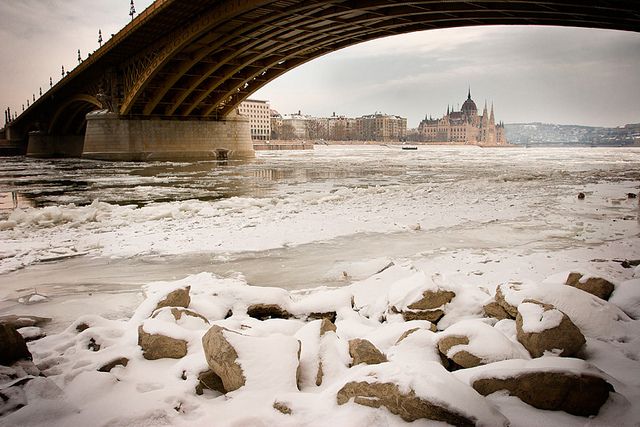
Why Did Europe's Danube River Freeze?

Just how extraordinary has this winter been in Europe? The Danube river has frozen, for one.
Europeans have been shivering under a blanket of cold air that has sent temperatures plummeting and snows drifting. Across the continent, hundreds have died from exposure to the cold.
The Danube's freezing is just one of many severe winter events in the continent this year. Heavy snowfall has blocked roads and stranded towns in central Italy. A train in Montenegro was stranded on the tracks for three days due to heavy snow. Even Venice's famous canals froze, a rare feat.
At least four Balkan nations suspended shipping on the Danube today (Feb. 14) because of heavy ice on the river, according to news reports.
Keeping Europe frozen is a climate pattern called a "Russian Winter." In this pattern, a strong Siberian anticyclone hovers over northern Russia and triggers intense cold and snow, according to a NASA statement. That cold has lingered long enough to freeze stretches of the Danube, the second longest river in Europe.
The Danube flows through 10 countries, so precise records of its last freezing are not easy to come by. But an obvious reason for this year's freeze is the teeth-chattering cold. Taking Belgrade, Serbia, as one example, this year's cold streak is the worst in decades, said Jim Andrews, senior meteorologist at AccuWeather.com.
"I looked back over 20 years and found a few significant cold snaps, but I didn't find anything quite as strong as this one," Andrews told OurAmazingPlanet
Sign up for the Live Science daily newsletter now
Get the world’s most fascinating discoveries delivered straight to your inbox.
On Jan. 13, 2003, the weather in Belgrade dropped to a low of minus 11 degrees Fahrenheit (minus 24 degrees Celsius). But two days later the temperature was back up to 47 F (8 C).
"I think that one was too short to turn the trick," Andrews said.
Belgrade's present cold wave from Jan. 29 to Feb. 13 shows temperatures at least 11 degrees F below normal for each day, Andrews said.
The worst of the stretch was a high of 10 F (minus 12 C) and a low of minus 11 F (minus 24 C). That was nearly 40 degrees F below normal for the day.
"We're talking pretty darn cold here," Andrews said.
You can follow OurAmazingPlanet staff writer Brett Israel on Twitter: @btisrael. Follow OurAmazingPlanet for the latest in Earth science and exploration news on Twitter @OAPlanet and on Facebook.












